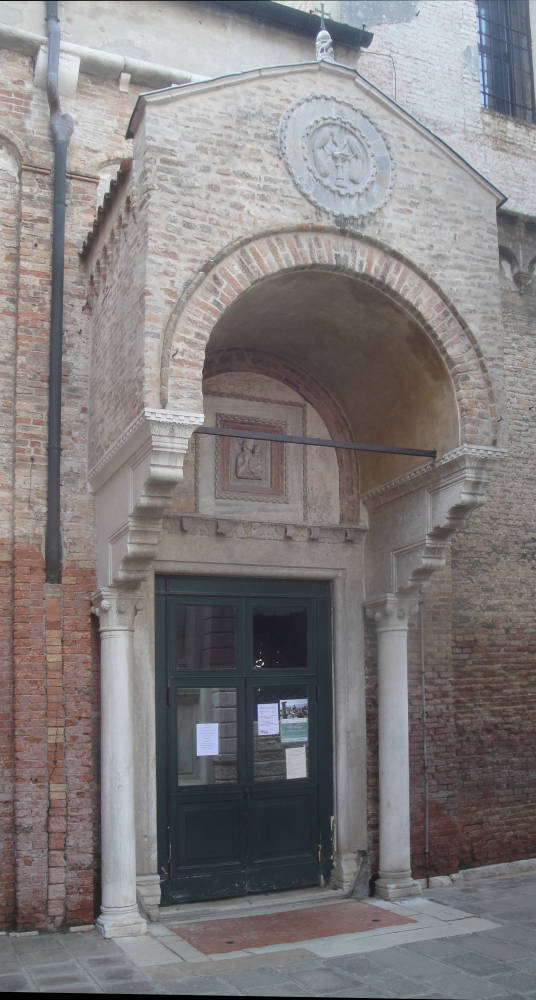

In the tourist’s guide to the architecture of the city that Ruskin includes near the end of The Stones of Venice, he describes the Carmini as “a most interesting church, of late thirteenth century work, but much altered and defaced. Its nave, in which the early shafts and capitals of the pure truncate form are unaltered, is very fine in effect; its lateral porch is quaint and beautiful, decorated with Byzantine circular sculptures. . . and supported on two shafts whose capitals are the most archaic examples of the pure Rose form that I know in Venice” (11.365). He praises “a glorious Tintoret over the first altar on the right in entering; the ‘Circumcision of Christ’” and adds that “cloister is full of notable tombs, nearly all dated; one, of the fifteenth century, to the left on entering, is interesting from the colour still left on the leaves and flowers of its sculptured roses” (11.365-66)
In his discussion of the use and misuse of finials on buildings, Ruskin claims that “that the finial is properly the ornament of gabled architecture; it is the compliance, in the minor features of the building, with the spirit of its towers, ridged roof, and spires.” Therefore, finials do not belong on Venetian architecture because “Venetian building is not gabled, but horizontal in its roofs and general masses; therefore the finial is a feature contradictory to its spirit, and adopted only in that search for morbid excitement which is the infallible indication of decline. When it occurs earlier, it is on fragments of true gabled architecture; as, for instance, on the porch of the Carmini” (11.12).
More of Ruskin's Venice
- St Mark’s Cathedral
- The Palazzo Ducale, Venice
- The Scuola de San Rocco
- Palazzi
- On the Grand Canal
- Leaving the Grand Canal
- On the way to Venice from the mainland
- Venice: Details and Corners
Photographs 2020. [You may use these images without prior permission for any scholarly or educational purpose as long as you (1) credit the photographer and (2) link your document to this URL in a web document or cite the Victorian Web in a print one.]
Bibliography
Ruskin, John. The Works. Ed. E. T. Cook and Alexander Wedderburn. “The Library Edition.” 39 vols. London: George Allen,1903-1912.
� �
Last Modified 24 March 2020